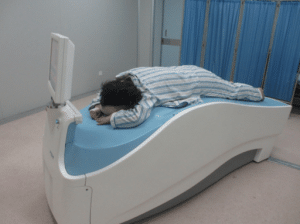10 FACTS YOU NEED TO KNOW ABOUT BREAST CANCER IN 2019

You better believe it—technology and information are changing rapidly and in a lot of ways for the betterment of our health. We have evidence-based studies, safer medical equipment and prevention and intervention programs to help us live the best possible lives. October is back, and it’s breast cancer awareness month around the world. What has changed? What new information have we learned about breast cancer to help us maintain and optimize our health? Here is a survey of ten things you need to know about breast cancer in 2019.
#1 WHAT IS BREAST CANCER?
Breast cancer is a cancer that develops from breast tissue. If we parse this simple definition, we can learn at least three basic things about this disease.
One, it occurs when there is abnormal cell growth in the breast. These cells can spread to the rest of the body. The best-case scenario is to be able to detect and eradicate the abnormal cells when they are still confined to the breast.
Two, breast cancer can affect men and women, because men and women have breast tissue.
Three, breast cancer can affect anyone with breast tissue, regardless of age.
#2 TYPES OF BREAST CANCER
According to the American Cancer Society, there are many types of breast cancer: common types and less common types.
Common types of breast cancer
These types of breast cancer start in cells that make up glands (glandular tissue), that is, in the ducts (the milk ducts) or the lobules (milk-producing glands). They are likely to show up as tumors.
- Ductal carcinoma in situ
- Invasive ductal carcinoma
- Invasive lobular carcinoma
In situ means the cancer has not spread. Invasive means the cancer has spread into the surrounding breast tissue.
Less common types of breast cancer
These types of breast cancer start in the cells of the muscle, fat, or connective tissue.
- Sarcomas
- Phyllodes
- Paget disease
- Angiosarcomas
If you want to read more about each type of breast cancer, go here.
#3 BREAST CANCER RISK FACTORS
According to the CDC, the main factors that influence the risk for breast factors are being a woman and getting older. These two factors are among several risk factors we cannot change, including:
- Genetic mutations. About 5–10% of breast cancer cases are due to genes inherited from a person’s parents, including BRCA1 and BRCA2 among others.
- Reproductive history. Early menstrual periods before age 12 and starting menopause after age 55 expose women to hormones longer, raising their risk of getting breast cancer.
- Having dense breasts
- Personal history of breast cancer or certain non-cancerous breast diseases
- Family history of breast cancer
- Previous treatment using radiation therapy
- Women in the United States who took the drug diethylstilbestrol (DES) between 1940 and 1971 to prevent miscarriage and women whose mothers took DES while pregnant.
Here are some factors that the CDC says we can manipulate to reduce the risk of breast cancer:
- Not being physically active. Become physically active.
- Being overweight or obese after menopause. Avoid obesity by maintaining your normal or ideal weight.
- Taking hormones. Be aware that “Some forms of hormone replacement therapy (those that include both estrogen and progesterone) taken during menopause can raise risk for breast cancer when taken for more than five years. Certain oral contraceptives (birth control pills) also have been found to raise breast cancer risk.”
- Reproductive history. Be aware that “Having the first pregnancy after age 30, not breastfeeding, and never having a full-term pregnancy can raise breast cancer risk.”
- Drinking alcohol. Be aware that “Studies show that a woman’s risk for breast cancer increases with the more alcohol she drinks.”
#4 WHO IS AT RISK?
According to the CDC, most breast cancers are found in women who are 50 years old or older.
Persons who have a family history of breast cancer or inherited changes in your BRCA1 and BRCA2 genes may have a high risk of getting breast cancer. It is important to cancer prevention and early detection to know your family history.
Male breast cancer is rare, but when it does occur, it is more common in older men.
#5 SIGNS OF BREAST CANCER
Knowing the signs of possible breast cancer in 2019 is key to early detection and diagnosis.
- Lump in the breast — This is the most common sign.
- Swelling of all or part of a breast (even if no distinct lump is felt)
- Skin irritation or dimpling
- Breast or nipple pain
- Nipple retraction (turning inward)
- Redness, scaliness, or thickening of the nipple or breast skin
- Nipple discharge (other than breast milk)
#6 TYPES OF BREAST CANCER SCREENING
Breast Imaging
Mammography
The mammogram (including screening and diagnostic) is the most common and most effective type of routine breast cancer screening. This imaging test enables doctors to look for any lump or mass in the breast. A newer type of mammogram is known as breast tomosynthesis or 3D mammography which may allow doctors to see breast tissue more clearly.
The benefits of mammography vary by age, says the Susan G. Komen organization, and major health organizations have different recommendations for when women should begin mammograms:
- National Comprehensive Cancer Network
- start annual mammography at age 40
- American Cancer Society
- start annual mammography at age 45
- every 2 years for women ages 55 and older for as long as you are in good health and can benefit from treatment if breast cancer is diagnosed.
- U.S. Preventive Services Task Force
- no routine mammography for all women 40-49. They recommend that women 40-49 discuss the pros and cons of mammography with their health care providers.
- mammography every 2 years for women 50-74.
However, the American Cancer Society recognizes that mammography has its limitations; namely, that it is not 100 percent accurate and may not be helpful for all women. Additionally, some physicians believe the mammogram itself represents a risk factor and can be a potential cause of cancer due to the ionizing radiation it sends into breast tissue.
Breast Ultrasound
According to Wikipedia, breast ultrasound is the use of medical ultrasonography to perform imaging of the breast. It can be considered either a diagnostic or a screening procedure. It may be used with or without a mammogram and often is used to screen women with dense breasts.
Breast MRI Scans
Breast MRI scans, according to cancer.org, are used by women who have been diagnosed with breast cancer. Strong magnets are used to create very detailed, cross-sectional pictures of the body.
Newer and Experimental Breast Imaging Tests

Attribution: Dai, Dong; Song, Xiuyu; Wang, Man; Li, Lin; Ma, Wenchao; Xu, Wengui; Ma, Yunchuan; Liu, Juntian; Zhang, Jin; Liu, Peifang; Gu, Xiaoyue; Su, Yusheng
Optical imaging tests pass light into the breast and then measure the light that returns or passes through the tissue.
Molecular breast imaging (MBI) is a newer nuclear medicine imaging test for the breast.
Positron Emission Mammography (PEM) is a newer imaging test of the breast.
Electrical impedance imaging (EIT) scans the breast for electrical conductivity.
Elastography is a test that can be done as part of an ultrasound exam.
For details on each of these tests, go here.
Alternatives to Breast Imaging?
Thermography is seen by some as a better option to mammography. Thermography, also called thermal imaging, is a noninvasive test that involves no radiation and uses a special camera to measure the temperature of the skin on the breast’s surface. The idea is that growth of cancer cells causes rise in blood flow and metabolism and as blood flow and metabolism increase, skin temperature goes up. However, According to BreastCancer.org, there is no evidence that thermography is a good tool to detect breast cancer early, when it is treatable. Says the organization, “On Feb. 25, 2019, the U.S. Food and Drug Administration (FDA) put out a safety communication telling people that thermography is not a substitute for a mammogram.
Iodine-Bromide Urine Test based on the role of iodine in breast health.
25 Hydroxl D Test which is based on the relationship between vitamin D deficiency and breast cancer.
Hormone Level and Estrogen Metabolism Tests
ONCOblot tests for the universal cancer cell marker ENOX2 and can identify the origin of the cancer in the bloodstream.
#7 BREAST CANCER PREVENTION TIPS
Breast cancer prevention is about lowering your risk by paying attention to the cancer-causing factors that you can control. Here is what the CDC recommends:
- Keep a healthy weight.
- Exercise regularly. In a study reported in the Canadian Medical Association Journal, moderate physical activity (like mowing the lawn the old-fashioned way, which is better in this case) showed “greater protective effect than activities of less intensity.” In addition, physically active women showed “a 20%–30% reduction in the relative risk of breast cancer compared with their inactive counterparts.”
- Don’t drink alcohol, or limit alcoholic drinks to no more than one per day.
- If you are taking, or have been told to take, hormone replacement therapy or oral contraceptives (birth control pills), ask your doctor about the risks and find out if it is right for you.
- Breastfeed your children, if possible.
- If you have a family history of breast cancer or inherited changes in your BRCA1 and BRCA2 genes, talk to your doctor about other ways to lower your risk. Options may include pre-emptive surgery (prophylactic bilateral mastectomy) or selective estrogen receptor modulators for persons at highest risk.
“Staying healthy throughout your life will lower your risk of developing cancer and improve your chances of surviving cancer if it occurs.”
#8 CANCER-FIGHTING NUTRIENTS
Overall, eat a healthy diet. However, there are two nutrients worth mentioning:
Iodine is a gatekeeper of breast integrity. Iodine initiates cancer cells apoptosis/death. Iodine is not toxic to normal cells. It also decreases DNA damage.
Benefits of Iodine

-alkaline
-anti-cancer
-anti-bacterial
-antifungal
-anti-viral
-anti-parasitic
-detox agent
Low iodine intake leads to an increase in estrogen. Estrogen causes cancer cell proliferation. The RDA (Recommended Daily Allowance) is 150 mcg/day.
Vitamin D deficiency has been linked to breast cancer.
The best vitamin D source is the sun. Try to get a lot of light from the sun, which will also boost sleep at night. Vitamin D supplements are good, too, since many of us spend most of our time indoors, especially as the weather becomes cold.
#9 BREAST CANCER MANAGEMENT
The management or treatment of breast cancer in 2019 depends on the type of cancer and the age of the patient. The major types of treatment include:
Surgery
- Removal of any tumor.
- Mastectomy: Removal of the whole breast.
- Quadrantectomy: Removal of one-quarter of the breast.
- Lumpectomy: Removal of a small part of the breast.
Medication
Medications that are used after and in addition to surgery is called adjuvant therapy. These include:
- Hormonal therapy (Hormone-blocking agents)
- Chemotherapy
- Monoclonal antibodies, namely, Trastuzumab and Pertuzumab
Neoadjuvant medications are used before surgery and may also include chemotherapy.
Radiation
Radiotherapy is administered after surgery to destroy any microscopic cells surgery might have missed.
#10 BREAST CANCER SUPPORT IN PHILLY
Cancer Support Community of Greater Philadelphia
Word of Encouragement
A breast cancer diagnosis is never good news. But, thankfully, we are living at time when research gives women, and men, lots of options for early detection, accurate diagnosis and effective treatment and management for breast cancer in 2019. So work to keep yourself in good health—body, mind and spirit. Talk with your healthcare provider about whether you should continue routine breast cancer screening as you age. Stay abreast of developments in the detection, diagnosis and treatment of breast cancer in 2019. Lend support to someone who is fighting to become a breast cancer survivor.
Leave a Comment
